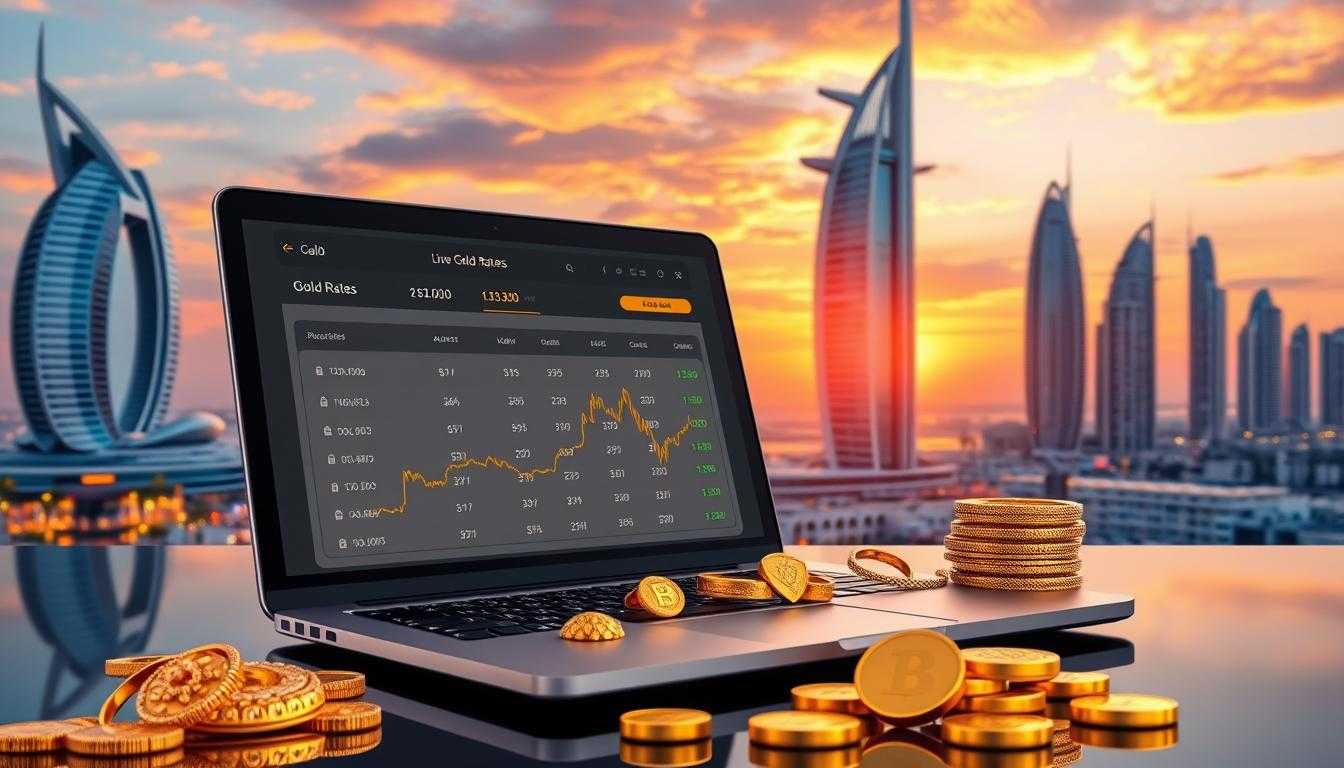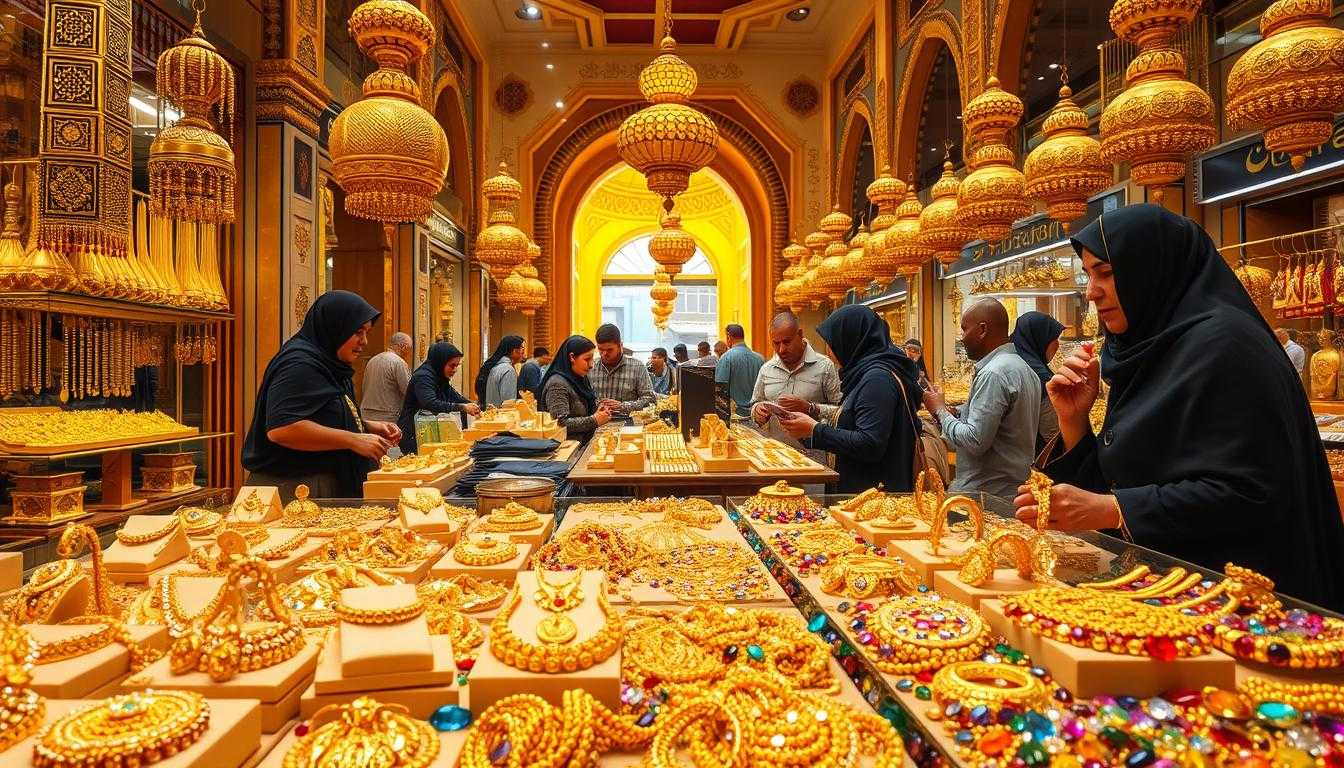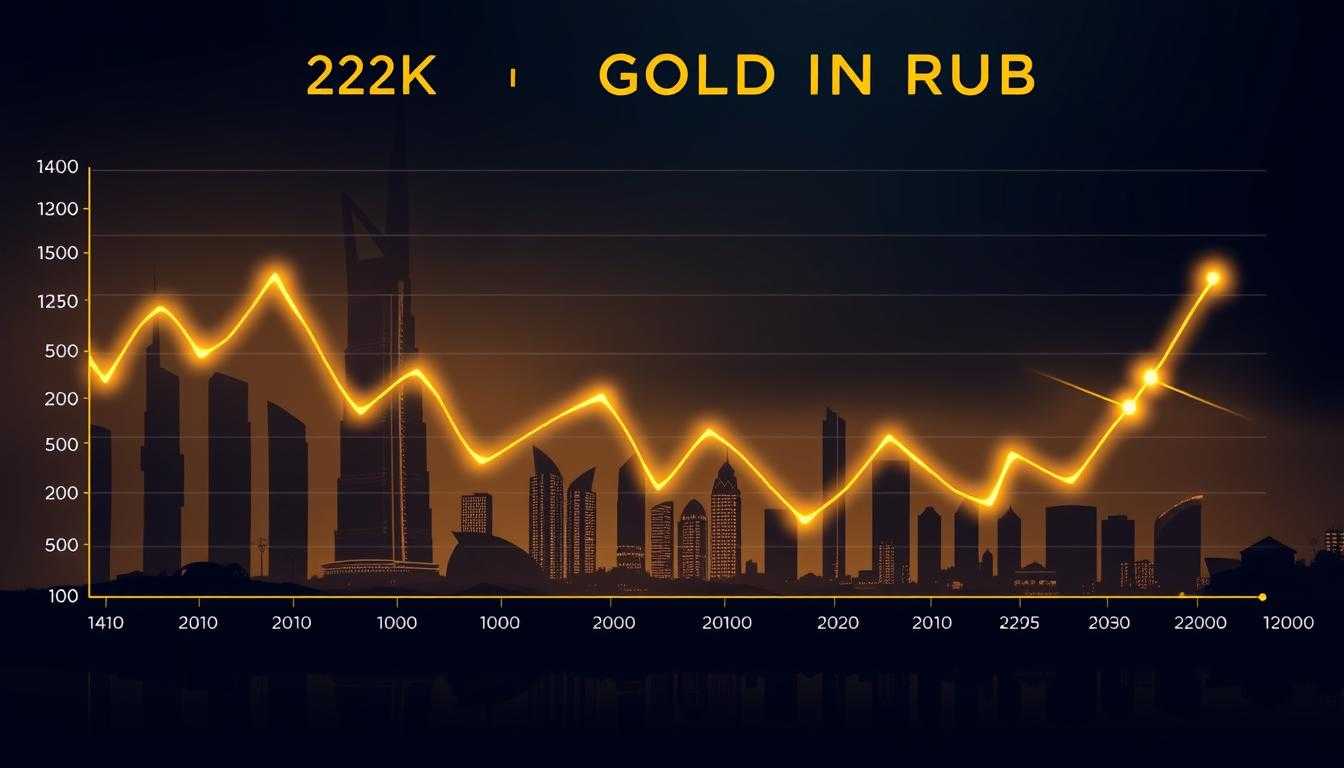Are you trying to make your money grow? Many people are. It can feel tricky with all the options out there. One path some forget about is gold. Yes, that shiny metal that’s not just for jewelry.
Did you know gold rates change daily and this can affect how much money you might make from it?
Our story here is simple but important. We’ll show why gold’s price moves up and down, what makes it do so, and how knowing this could help your wallet get fatter. Plus, we have tips on ways to invest in gold smartly.
Ready for a golden opportunity? Keep reading!
Factors Influencing Gold Prices
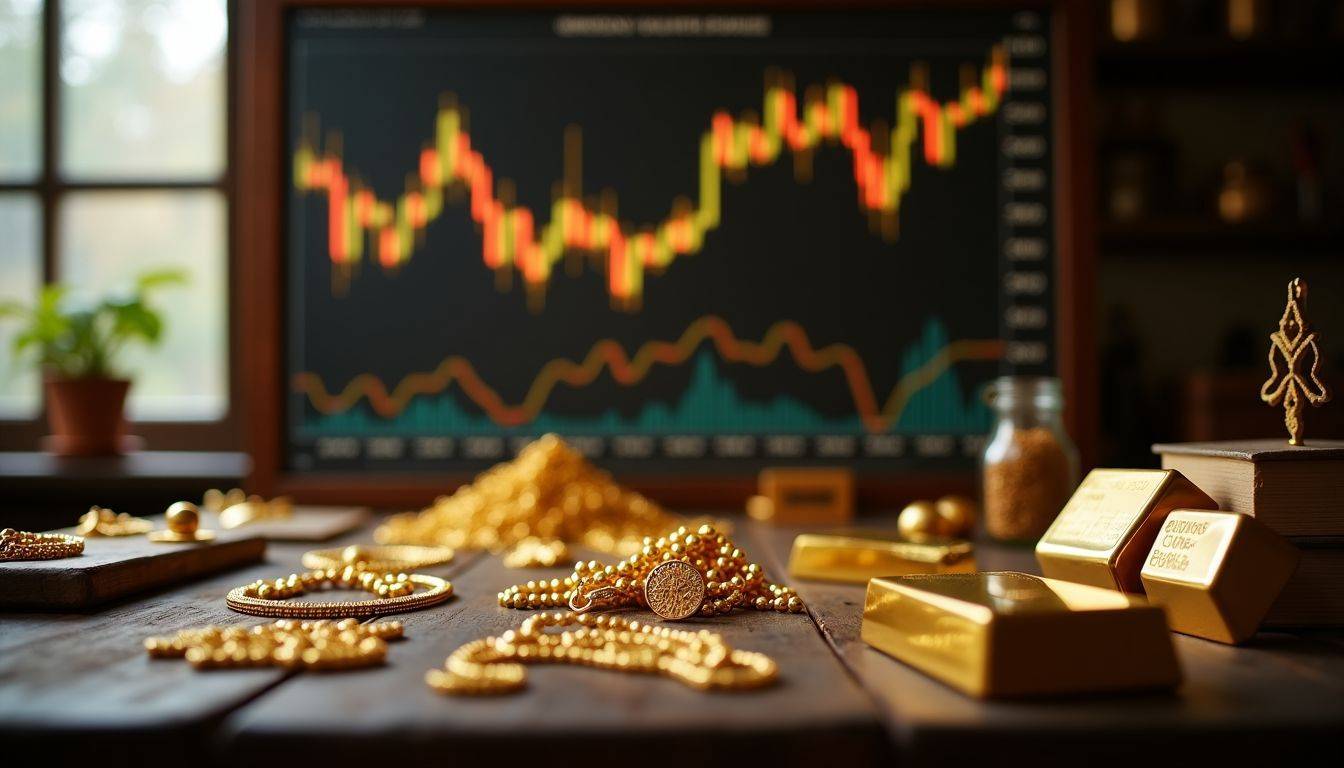
Gold prices move with the market’s heartbeat, shifting for many reasons. Key players like central banks and the almighty dollar set the pace while demands for jewelry and investment choices pull their weight too.
Central Bank Reserves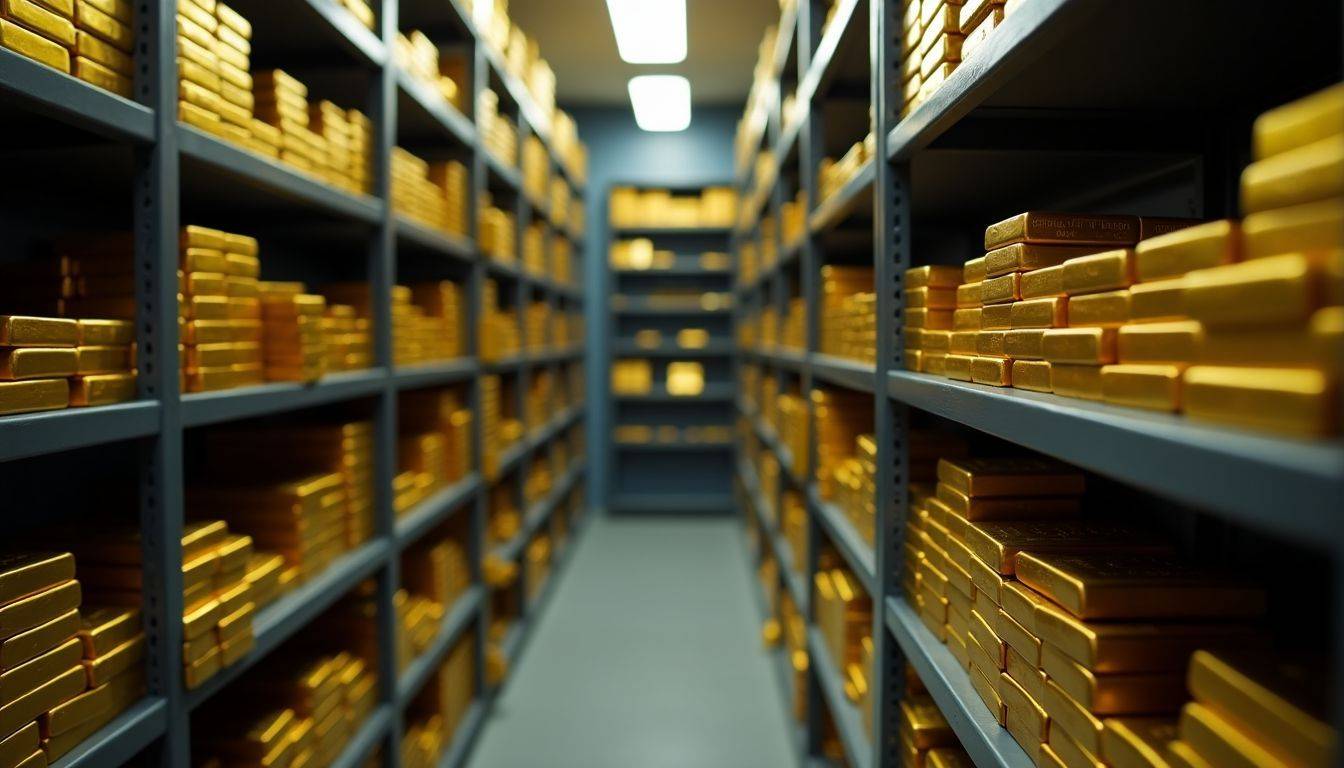
Central banks play a big part in gold prices. They hold large amounts of gold and can change these amounts based on what they need. If a central bank buys more gold, the price goes up because demand is higher.
This happens when they want to protect their money from losing value due to high prices in the market or bad economic times. For instance, if a central bank fears that the economy might do poorly, it may buy more gold as safety.
These actions show us how important central banks are in setting gold prices. Their buying patterns help predict where prices will head next. Next up, we’ll look at how the value of the U.S dollar affects gold rates.
Value of the U.S. Dollar
The U.S. dollar plays a big role in gold prices. If the dollar is weak, gold prices go up. This happens because investors see gold as a safe place to keep their money when the dollar doesn’t do well.
Also, a strong dollar can make gold prices fall. So, keeping an eye on the exchange rates and how they move can help traders and investors make smart choices.
People often turn to gold when they feel unsure about the value of the U.S. dollar. Knowing this link between the currency’s strength and demand for gold is key for anyone looking to grow their wealth with precious metals like these shiny bars or coins we all fancy.
Global Jewelry and Industrial Demand
Moving from the value of the U.S. dollar to global demand, gold plays a big part in both jewelry and industries. People love gold for its beauty and how it lasts. This makes it a top pick for rings, necklaces, and more in the jewelry market.
Its look and lasting nature add loads of value.
Gold is also key in tech gadgets, health tools, and flying machines due to its unique features. These uses keep gold’s worth up outside of just looking pretty or holding wealth. Trends in what people like change how much gold they buy for fashion or use in products.
Investment Demand
Gold rates have a big impact on how much people want to invest in it. When gold prices go up, more folks want to put their money there. It’s a safe spot when the market feels risky.
Daily updates on the market can make or break someone’s choice to buy gold. Think about it—knowing what’s happening each day helps you play smart.
YouTube Videos and blog are like treasure maps for learning about gold investing. They give tips and insights that make you think twice before making a move. Plus, seeing how trends change can point investors toward gold or away from it, depending on what’s going on in the world.
Now, let’s talk about looking back at gold prices over time…
Historical Analysis of Gold Prices

Looking back at the ups and downs in gold prices can show us how it stands strong during tough money times. Gold has always been a go-to for people wanting to keep their wealth safe when stocks or currencies fall apart.
Isn’t it cool to see how past events shape our gold strategies today? Keep reading to learn more about using this shiny metal to grow your funds.
Performance during Economic Uncertainty
Gold shines bright in tough times. People turn to it as a safe place for their money when the economy looks shaky. This makes gold prices go up. History backs this up, too. In past downturns, gold’s value often rose when other investments fell.
Investors keep an eye on daily gold trends to spot chances to grow their wealth. They use expert advice and market analysis to make smart moves in volatile markets. Gold rates today give investors key insights for planning their next steps carefully.
Comparison with Other Investment Vehicles
Let’s examine how gold compares to other investment options such as Forex, Oil, Indices, and Bitcoin. Gold is a reliable asset that consistently performs well, particularly during market turbulence.
| Investment Vehicle | Stability | Potential Returns | Risk Level |
|---|---|---|---|
| Gold | High | Moderate | Low |
| Forex | Variable | High | High |
| Oil | Variable | High | High |
| Indices | Medium | High | Medium |
| Bitcoin | Low | Very High | Very High |
Analyzing this information, gold may not offer rapid wealth, but it provides a reliable buffer against significant financial losses when markets fluctuate. Forex trading involves high volatility with potential for both substantial gains and losses. Similarly, oil investments carry constant variations. Indices represent a diversified approach, reducing some risk but not as secure as gold. Bitcoin carries the potential for extreme fluctuations.
Let’s consider how these factors influence strategic money management with gold rates.
Future Gold Price Predictions

Thinking about what gold prices will do next? You’re not alone. Everyone wants to know if their shiny investments will grow. Experts use things like economic trends and past patterns to guess future prices.
They look at actions by the Federal Reserve, like lowering interest rates, and how these moves can push gold prices up or down. Some say in 2024, we might see higher or stable gold values due to these factors.
So, keep an eye on those forecasts—they could help you make your next big move in investing!
Fed Rate Cuts and Their Impact on Gold Prices
Gold prices frequently increase when the Federal Reserve reduces interest rates. Diminished rates make gold more alluring as it becomes less expensive to hold onto gold in comparison to other interest-earning investments.
Gold is perceived as a safe haven during unpredictable periods. Thus, when rates decrease, larger populations purchase gold, causing its price to rise.
Once the Federal Reserve lowers interest rates, gold’s allure intensifies for investors in search of a secure sanctuary.
Patterns in the market indicate that following a Fed rate reduction, investors gravitate to gold. This reaction is driven by fear of inflation and economic instability. Gold serves as a protective barrier against these issues.
Observing this trend can assist traders and investors in making calculated decisions about where to invest their funds before and after rate reductions transpire.
Gold Price Forecast for 2024
So, we’ve talked about how Fed rate cuts can shake things up in the gold market. Moving on to what’s coming next, experts are eyeing 2024 with keen interest for gold’s journey. Predictions say the precious metal might see some bright days ahead.
With all the ups and downs in the economy, many turn to gold as a safe spot.
For 2024, some forecasters think gold could climb higher than recent years have seen. It’s not just guesswork; they look at trends like how much governments and people want to keep or buy more gold.
This demand plays a big part in pushing prices up or down. So if you’re thinking about where to put your money next year, keeping an eye on these predictions might just give you a hint on what move to make next!
Investment Strategies in Gold
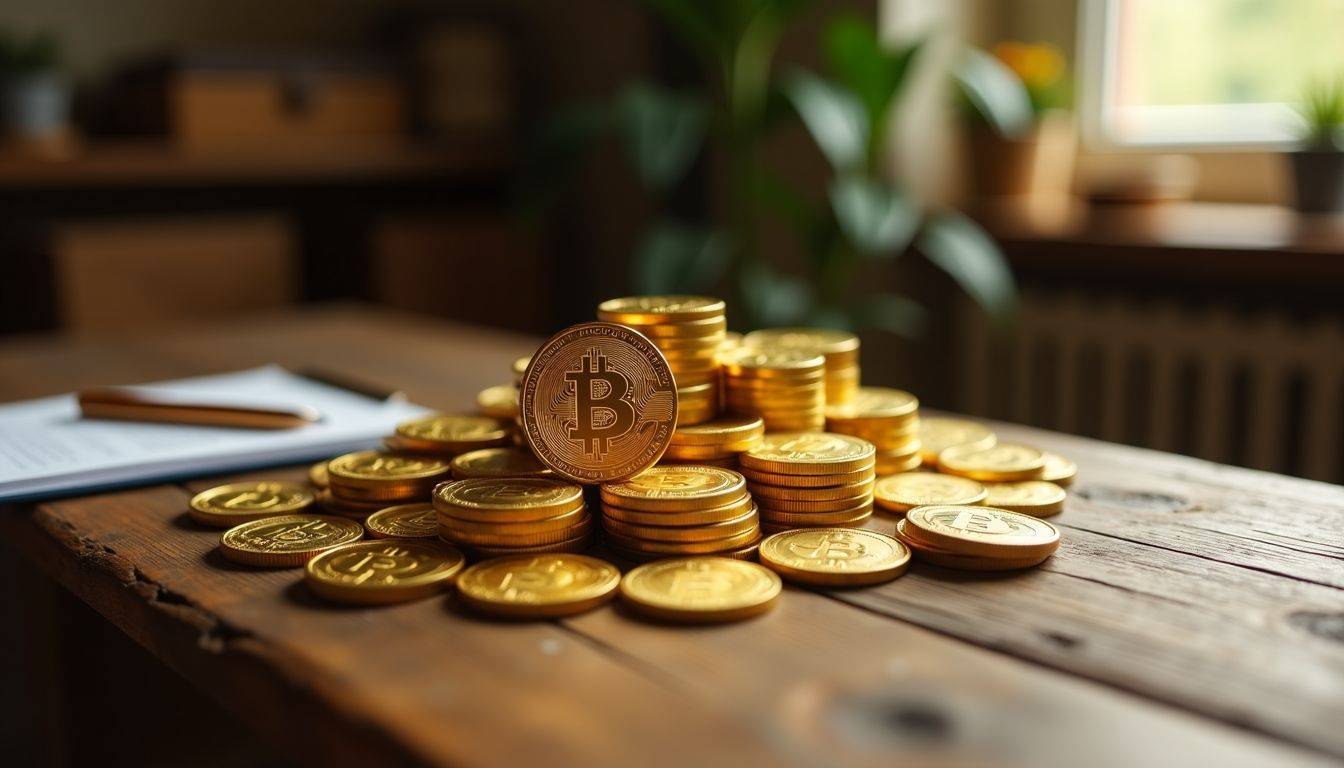
Looking at gold? There are cool ways to put your money in it. You can hold real gold, like coins or bars. Or you could go for Gold ETFs (Exchange Traded Funds) and mutual funds that track the price of gold.
For those who love tech, digital gold lets you own it without holding the physical stuff. To find out how these can help grow your cash, keep reading!
Direct Gold Investment: Bars, Coins, and Bullion
Gold is a stable investment choice compared to other assets. Knowing current gold rates helps you make the best investment choices.
- Buying gold bars, coins, and bullion lets you own physical gold. This means you can see and touch your investment.
- Gold bars are big chunks of pure gold. They come in different sizes, so you can choose how much to invest.
- Coins are smaller than bars and often have cool designs. Some are collectibles that might get more valuable over time.
- Bullion means gold in bulk form, including bars and coins. It’s a fancy word for a simple idea: lots of gold.
- Prices for bars, coins, and bullion change every day, just like stock prices do.
- Investing in physical gold means finding a safe place to keep it. Many people use safes or bank deposit boxes.
- You can sell your gold when prices go up or hold onto it during tough times as a safety net.
- Experts share insights on market trends to help traders buy or sell at good times.
- Watching daily market updates is smart if you’re serious about investing in gold.
- As part of your bigger plan, mixing gold with other investments can protect your money from big ups and downs.
Choosing to put money into physical gold takes some planning but can pay off by making your finances stronger over time.
Gold ETFs and Mutual Funds
Gold ETFs and mutual funds make investing in precious metals easier. These options allow traders and investors to tap into gold’s financial growth potential without owning physical metal. Here are key points about Gold ETFs and Mutual Funds:
- Gold exchange-traded funds (ETFs) track the price of gold. They trade on stock exchanges just like regular stocks.
- Buying shares in a gold mutual fund gives investors exposure to multiple gold mining companies or assets.
- These investments offer diversification. This means they can help reduce risk in your investment portfolio.
- Market analysis shows that adding precious metal investments, like gold ETFs, can improve trading performance over time.
- Investors get daily market updates. This information helps make informed decisions on when to buy or sell.
- Trading tactics for these funds include watching global economic indicators that affect gold prices.
- Investment strategies often involve consulting with experienced advisors or analysts who understand market trends.
- Blogs and YouTube videos serve as additional resources for learning about investing in Gold ETFs and mutual funds.
Next, let’s talk about how to use gold rates in your financial plans.
Digital Gold Investments Digital gold investments match well with plans for making more money. They help people make smart choices based on market trends and expert advice. Here’s what you need to know:
- Digital gold lets you buy real gold online without having to store it yourself.
- Prices update every day, so you’re always informed.
- You can start with a small amount of money, making it easy for anyone.
- Selling is simple, and you can do it anytime.
- It links with bigger financial goals through smart planning.
- Key insights on market trends guide your investment moves.
- Using platforms that give daily updates can boost how well your digital gold does.
- These sites also have learning tools like blog posts and videos to help you understand more.
Now, let’s talk about other ways to invest in gold.
Strategies for Incorporating Gold Rates into Your Financial Plans

To make your money grow, keep an eye on gold prices every day. This way, you can buy or sell at the right time. Think of it as a game where timing is everything. If the price goes up after you buy, you win because your gold is worth more.
Experts say to mix different kinds of investments in your plan. This reduces risk and could lead to better returns over time. Gold should be one part of this mix. It’s like having a safety net if other investments go down.
Gold is not just another asset; it’s insurance for your portfolio.
Risks and Rewards of Investing in Gold

Throwing your money into gold can be a bit like riding a roller coaster – expect some highs and lows. On one side, you might see your investment grow as gold often does well in tough economic times.
But, on the flip side, get ready for a bumpy ride. The value of this shiny metal can swing wildly based on global events or changes in the stock market.
Potential Returns and Volatility
Gold’s value can fluctuate significantly, presenting simultaneously the possibility of peril and profit. Factors such as demand for gold, the value of the dollar, and global events can result in its price increasing or decreasing.
It’s observed that often when equities decline, gold prices ascend. Hence, having a portion of your resources invested in gold can potentially act as a safety net if other portions of your portfolio underperform.
Keeping an eye on daily variations in gold prices can assist you in making astute decisions. Understanding the right moment to acquire or dispose of your holdings based on these fluctuations could lead to substantial earnings.
But be aware, where there exist great opportunities for profit, there also lurk considerable risks. A swift downturn in prices post-purchase could lead to losses. Thus, risk management and diversifying your investments are paramount.
Risks Associated with Gold Investments
After examining the fluctuations in gold’s price, let’s redirect our attention to potential pitfalls that can accompany investing in gold. Like every other investment option, gold also carries its risks.
One predominant risk is the market’s volatility. This implies that gold prices can undergo rapid changes due to global events or alterations in purchasing or selling interests.
Furthermore, shifts in the global economy can greatly influence the success of your gold investment. Significant alterations in worldwide economies might result in your investment returns decreasing.
Hence, although investing your dollars in gold might appear as a sturdy strategy – particularly if you are skeptical of unstable markets – it is essential to keep in mind that it’s not always positive.
The task at hand is to balance the possibility of profit with potential risks stemming from the close ties these investments have with global economic health and market volatility.
How Central Banks Influence Gold Rates
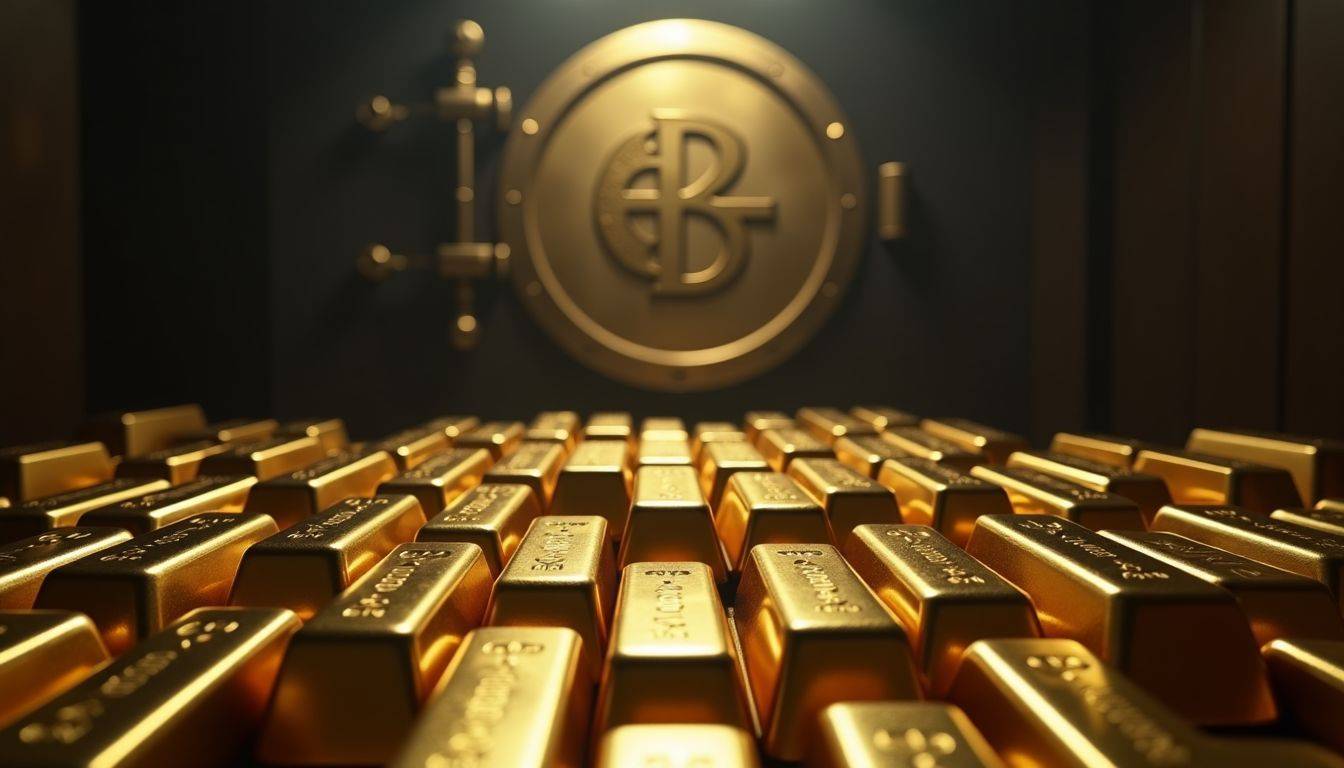
Central Banks play a big game in setting gold prices. They hold tons of gold and their buy or sell choices can shift the market.
Gold as a Percentage of Total Reserve Holdings
Gold plays a big role in how countries keep their money safe. Think of it like a backup plan. If something bad happens to the money, gold helps make sure things don’t go too wrong. Let’s look closer at this idea with a simple table:
| Country | Percentage of Gold in Reserves |
|---|---|
| Country A | 50% |
| Country B | 60% |
| Country C | 70% |
So, what does this table tell us? Well, it shows that different countries keep different amounts of gold as a safety net. When a country has a lot of gold, it feels safer. It’s like having a big, strong fence around your house. This gold can help a country when money values go down or when things get shaky in the market.
Now, think about a game of seesaw. Gold is on one end and the country’s money is on the other. When the value of the money goes down, gold goes up. This helps keep the seesaw balanced.
Big banks that keep a country’s money also like gold. They buy more when they think it’s needed to keep things stable. Seeing these banks buy gold can make people want to buy gold too. This can make the price go up.
In short, gold is very important for keeping a country’s money safe. It’s like an umbrella on a rainy day. When the sun shines again, everyone feels happy they had their umbrella ready.
Central Bank Buying Patterns
Let’s discuss central banks and their strategic interest in gold. Central banks contribute significantly to determining gold rates through their management of gold reserves. To maintain their country’s financial stability and currency value, they might increase their gold reserves or decrease them.
Consider this simple table for an overview of central bank activities and their effects on gold prices:
| Action | Impact on Gold Rates |
|---|---|
| Central Banks Buy More Gold | Rates usually increase |
| Central Banks Sell Gold | Rates typically decline |
| Hold Gold as Part of Reserve | Contributes to rate stability |
Market analysts monitor central bank activities closely, providing daily reports on significant actions. This information is invaluable for those trading in gold, offering insights into potential future price movements.
Central banks are methodical in their decisions to adjust gold holdings, taking into account market trends and global economic stability. During times of economic uncertainty, central banks often increase their gold reserves, which can drive up prices.
Interestingly, central banks may also influence each other’s behavior. If one central bank actively buys or sells gold, others may follow suit, causing a collective impact on the market.
For gold investors, staying informed about central banks’ activities is essential. Their moves can provide valuable clues for strategic investment decisions.
In conclusion, for traders and investors, monitoring central bank actions is crucial. Their decisions could be the key to successful gold investment outcomes.
Conclusion: Strategic Decisions for Leveraging Gold for Financial Growth
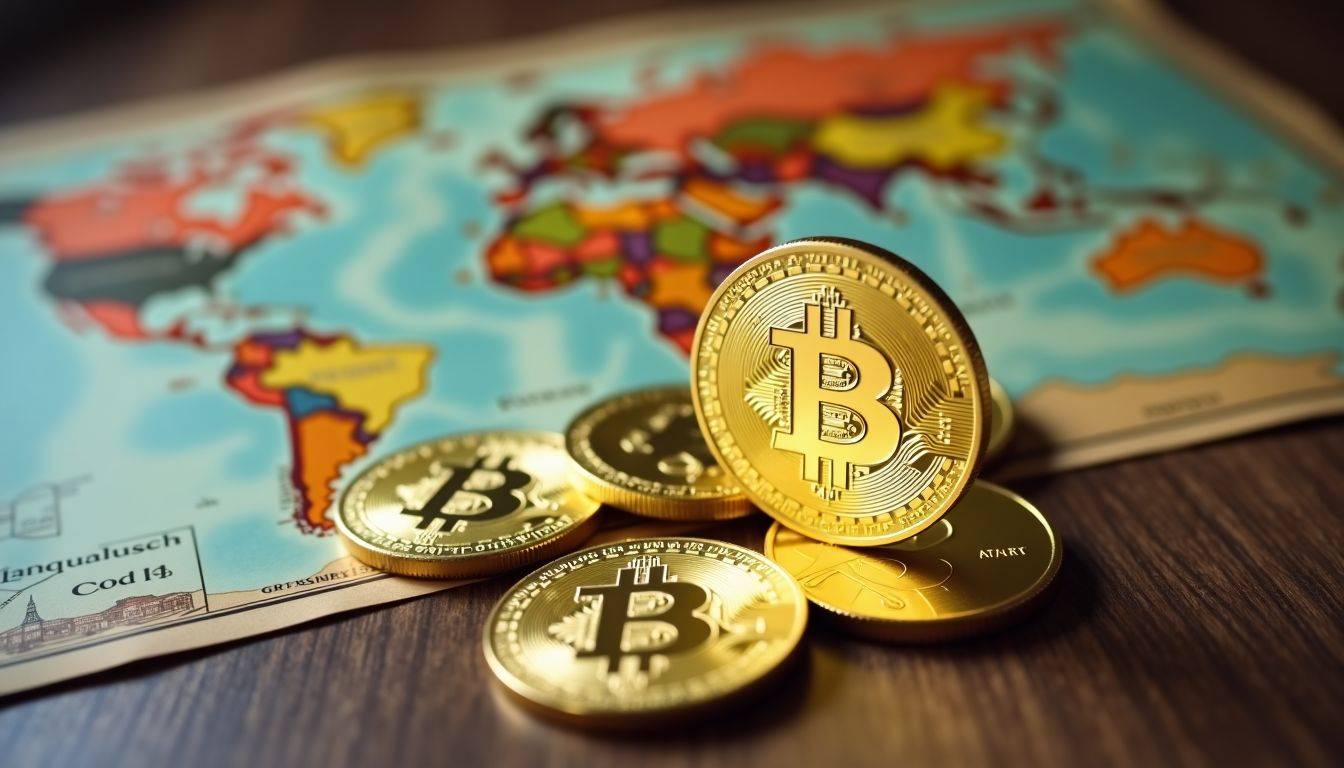
Investing in gold can effectively increase your financial growth. It serves as a strategic asset during periods of significant market fluctuations or inflations. Consider acquiring gold in the form of bars, coins, or even engaging in gold funds.
These decisions are astute, suitable for both seasoned and budding investors.
Observing the practice of central banks accumulating gold can offer insightful pointers. They utilize it for financial security, which is a strategy available to you as well. Moreover, several experts predict a potential rise in gold prices, presenting a lucrative opportunity for those aiming to augment their earnings.
However, investment in gold also has its peaks and troughs, similar to all ventures involving your well-deserved wealth. The strategy lies in diversifying your resources.
Why not explore it? Incorporating this lustrous metal into your investment portfolio might provide the momentum required to achieve your ambitious financial objectives.
FAQs
1. What’s the big deal about gold rates for financial growth?
Well, it’s simple – gold rates can be a real game changer in your financial journey. They’re like that secret sauce you add to your investment portfolio…a pinch of sparkle, if you will!
2. How exactly do I harness the power of these gold rates?
Great question! It’s all about keeping an eye on those shiny numbers and buying when they dip down low. Then, when they climb back up (and trust me, they always do), you sell and make a neat profit.
3. But isn’t investing in gold risky?
Sure, there are risks with any type of investment – even stashing cash under your mattress has its own dangers (hello dust mites!). The trick is understanding how gold prices move and making smart decisions based on that knowledge.
4. Can anyone get into this whole “gold rate” business?
Absolutely! Whether you’ve got a few spare bucks or a hefty nest egg, anyone can invest in gold. Just remember to start slow, keep learning and stay patient – Rome wasn’t built in a day after all!


